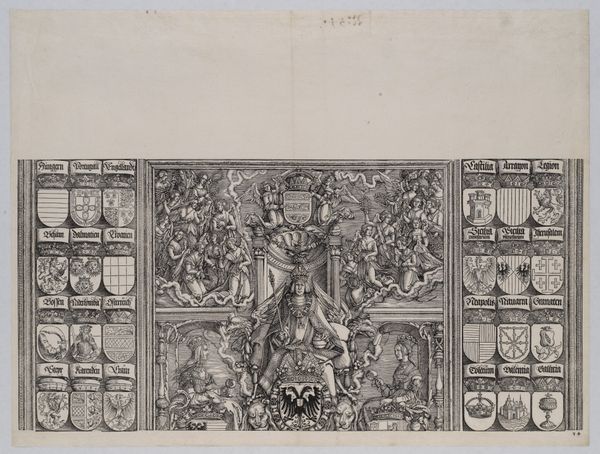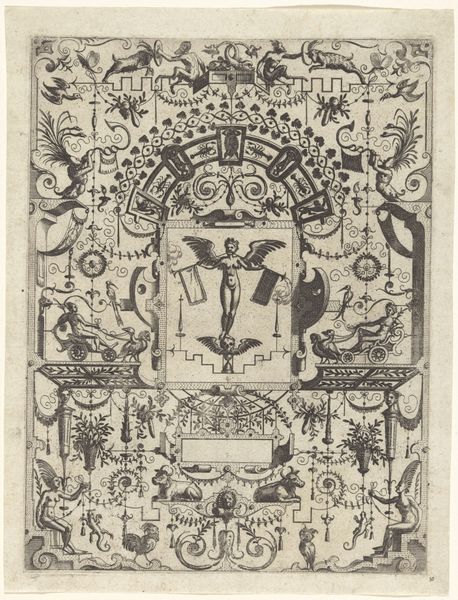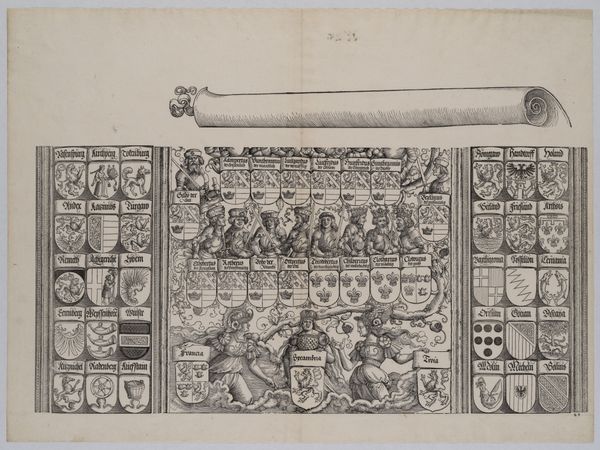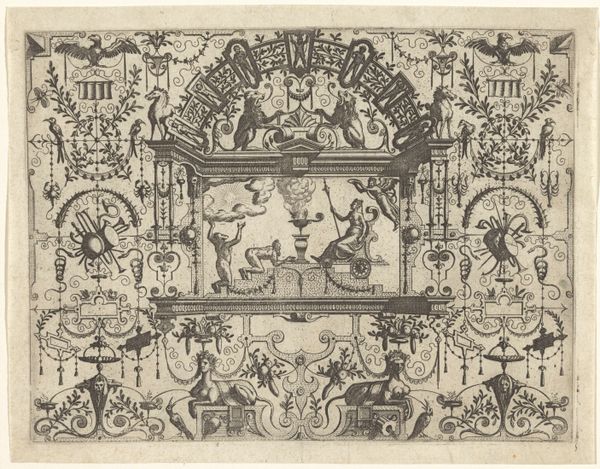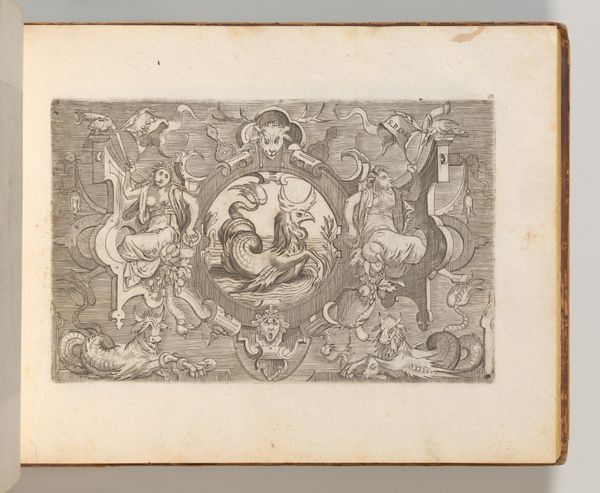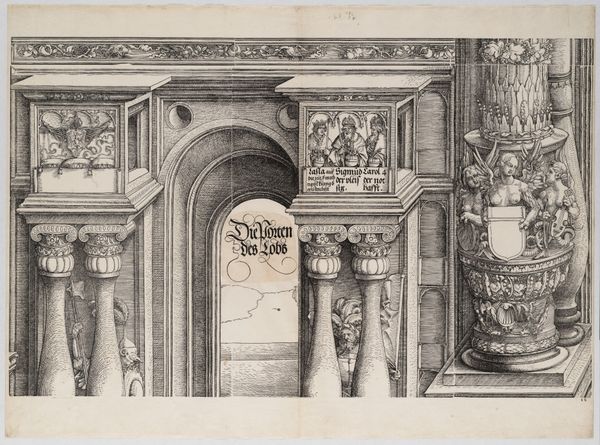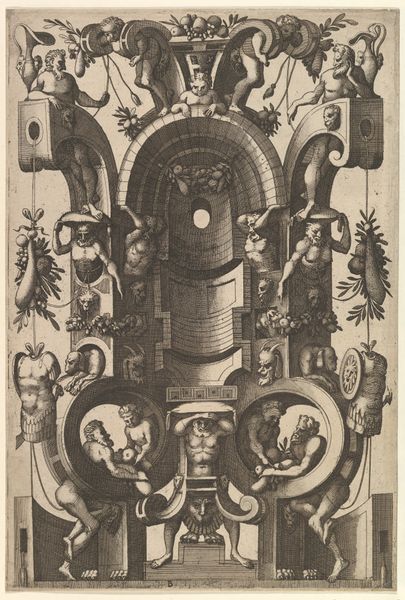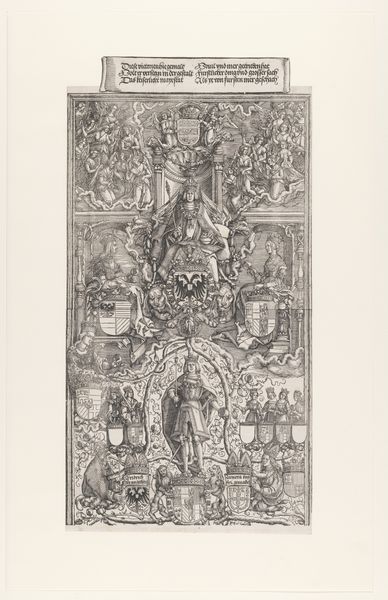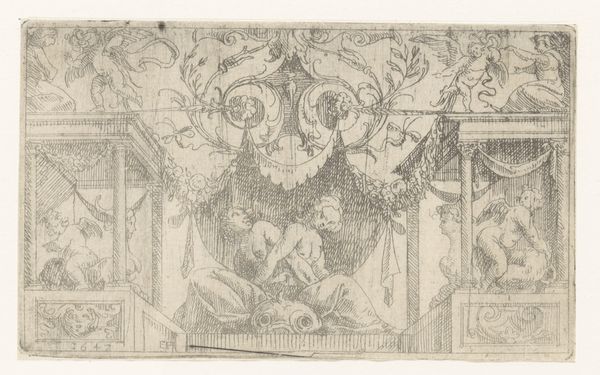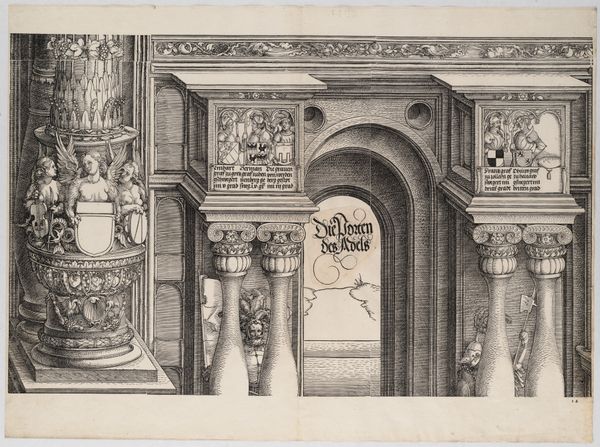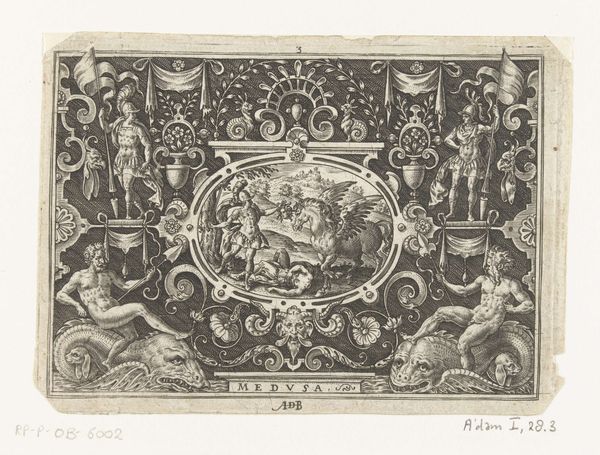
The Upper Portion of the Genealogy of Maximilian; with the Right Edge of the Scroll for the Explanatory Text, from the Arch of Honor, proof, dated 1515, printed 1517–18 1515 - 1517
0:00
0:00
drawing, graphic-art, print, woodcut, engraving
#
drawing
#
graphic-art
#
allegory
# print
#
woodcut
#
history-painting
#
northern-renaissance
#
engraving
Dimensions: Sheet: 18 1/16 × 24 15/16 in. (45.9 × 63.4 cm)
Copyright: Public Domain
Curator: The piece before us, held at the Metropolitan Museum of Art, is entitled "The Upper Portion of the Genealogy of Maximilian; with the Right Edge of the Scroll for the Explanatory Text, from the Arch of Honor, proof," dating from 1515 to 1517. It's a woodcut and engraving by Hans Springinklee. Editor: An incredibly intricate composition. My immediate response is one of awe at the density of visual information, the heraldry… and a touch of the archaic. It feels deeply embedded in a very particular time and system of power. Curator: Indeed, the organizational structure is key here. The heraldic shields flanking the central figure display an intense formal balance. Observe the textures achieved solely through line work, the controlled use of hatching and cross-hatching creating tonal variations, especially evident in Maximilian’s armor and within the woven floral motifs that surround him. Editor: And those symbols… each crest telling a story. You get a powerful sense of dynasty, legacy, a kind of deliberate construction of history through the visual language of power. Look at the recurring motif of the imperial eagle. And how it leads the eyes upwards to the title scrool—an insistence on lineage and divine right. Curator: Semiotically rich, wouldn’t you say? Springinklee orchestrates a complex interplay between figure and ground; the meticulous attention to detail distracts viewers from any single focal point. The result is an experience that mimics how such complex ideologies permeate a culture: unavoidable, interconnected, and overwhelming in its sheer volume. Editor: Overwhelming but also considered. The balance of masculine and feminine symbolism too - observe the allegorical figures - both reinforce and maybe even subtly subvert contemporary views of power in the Northern Renaissance court? It makes you question the narratives being woven, not just accept them. Curator: That interplay, as you point out, opens up further interpretations. Though intended as pure propaganda, the details invite continued formal analysis beyond simple subject recognition. The craftsmanship stands alone. Editor: Absolutely, and I think that is precisely why these symbols, designed to wield power in their time, can still trigger complex associations and reflection even for us today. A lot is retained, even after so long.
Comments
No comments
Be the first to comment and join the conversation on the ultimate creative platform.
